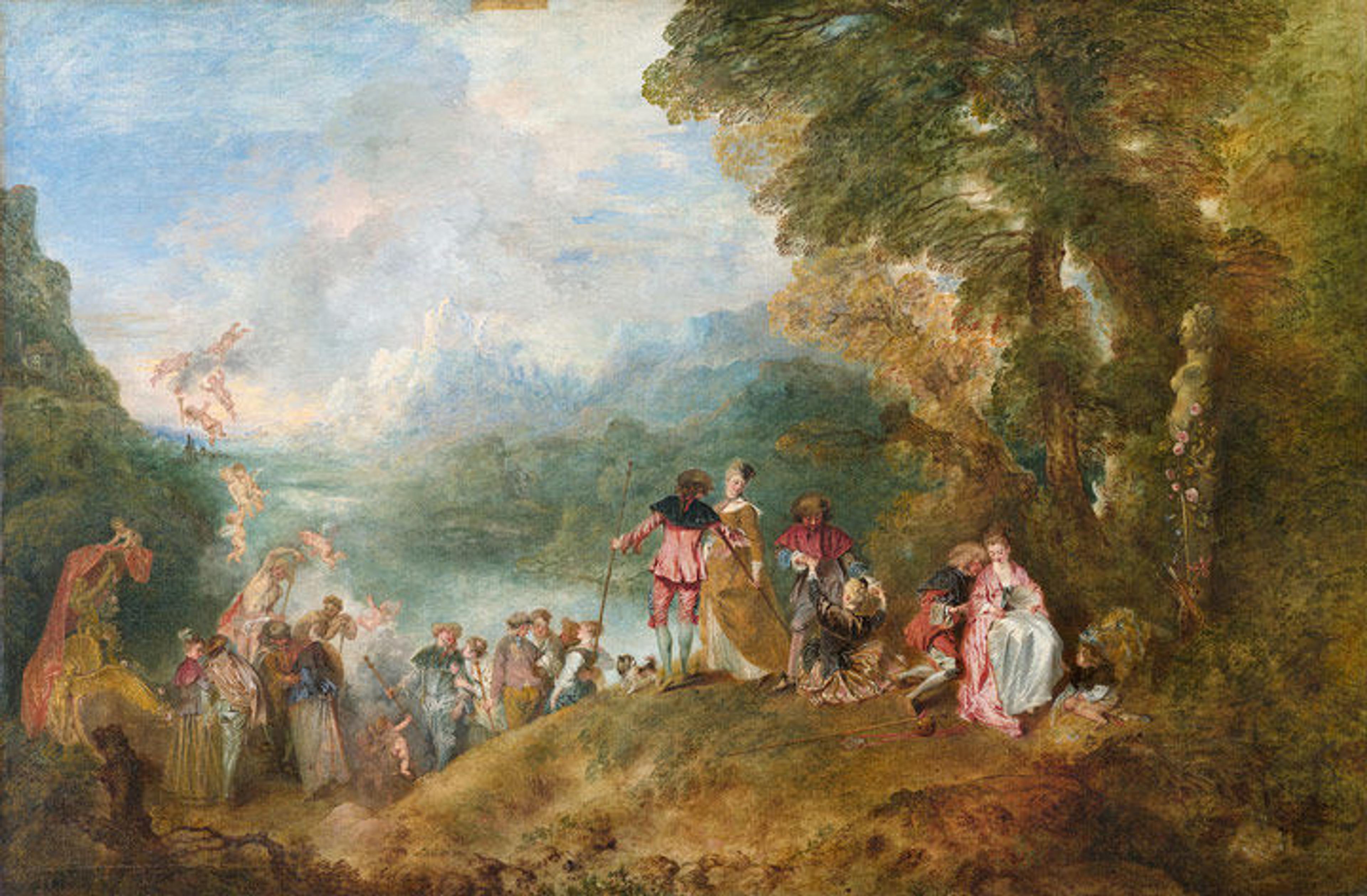A Mysterious Journey to Fragonard's Island of Love

Jean Honoré Fragonard (French, 1732–1806). The Island of Love, ca. 1770–80. Black chalk and gouache, 11 x 14 1/4 in. (27.9 x 36.2 cm). Private collection
«Jean Honoré Fragonard's The Island of Love, on view in the third gallery of the exhibition Fragonard: Drawing Triumphant—Works from New York Collections, transports viewers to the edge of a lush, emerald green forest. To the right, a gilded, canopied Venetian boat conveys a group of elegant figures—notably, two women wearing bright blue-and-white robes à la française—to a set of stairs leading to the cavernous recesses of a thick hedge. To the left, a natural cascade of pale turquoise water spills from the depths of the forest, culminating in icy blue pools. This sensual fantasy would have appealed to members of Fragonard's elite 18th-century patrons, but it is no less compelling for today's viewer; one can almost hear the gurgle and feel the spray of churning water, or smell the delicate aroma of the floral foliage.»

Jean-Antoine Watteau (French, 1684–1721). Pilgrimage to the Isle of Cythera, 1717. Oil on canvas, 50 4/5 x 76 2/5 in. (129 cm x 194 cm). Musée du Louvre, Paris
This fantastic scene recalls the narrative ambiguity of Jean-Antoine Watteau's dreamy Pilgrimage to the Isle of Cythera in the collection of the Louvre Museum. Like Watteau's fête galante, Fragonard's The Island of Love offers us few answers. Has the boat just arrived, or will it soon depart the island? What luxe, pretty pleasures is the boating party there to pursue? However, Fragonard's vision is sharper and chillier than that of Watteau; observe, for example, the rocks that punctuate the water's surface (which are perilously close to the bow of the boat!) or the inky pockets of shadow throughout the landscape.

Jean Honoré Fragonard (French, 1732–1806). The Island of Love, ca 1768–70. Oil on canvas, 27 1/8 x 35 1/2 in. (71 x 90 cm). Museu Calouste Gulbenkian, Lisbon
The version of The Island of Love executed in black chalk and gouache (an opaque, richly pigmented form of watercolor) approximates the color and composition of a larger oil painting that was probably commissioned by Jean Benjamin Delaborde, first valet of the king's bedchamber (premier valet de chambre) to Louis XV. (Delaborde's mistress, ballerina Marie Madeleine Guimard, was another patron of Fragonard's.) Yet like many of Fragonard's works on paper, the date of the gouache work, and its relationship to the painting, remains a mystery.
Perrin Stein, the curator of Fragonard: Drawing Triumphant, offers the compelling argument that The Island of Love gouache—like the other gouache in the exhibition, The Little Park—is an iteration that postdates any related works. We might speculate that after completing the painting, Fragonard, wishing to dwell a bit longer on the cool shore of that mysterious island, set about reimagining the scene in a smaller, more intimate work on paper.
Standing before the finished gouache in the exhibition gallery, one can't help but share that sentiment!
Related Links
Fragonard: Drawing Triumphant—Works from New York Collections, on view at The Met Fifth Avenue through January 8, 2017
Kelsey Brosnan
Kelsey Brosnan was formerly a research assistant in the Department of Drawings and Prints.